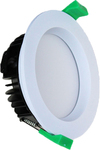This MAY NOT BE for everyone.
Just posting this for people who are building their first home or revovating old one and looking for cheap but reliable LEDs, I built mine more than a year ago and using these LEDs throughout. Great lights. I am not associated with the store but you can call the store to get better rate on LEDs and shipping if buying more quantity.
Cheers


http://www.agmelectrical.com.au/buy-led-light/wholesale-led-…
Seem like a similar product, I have used the AGM ones as have many others I know (we are all in the construction industry).
The ones you linked are 4000k though so I guess if you're specifically after that.
AGM come in 3000 & 5000